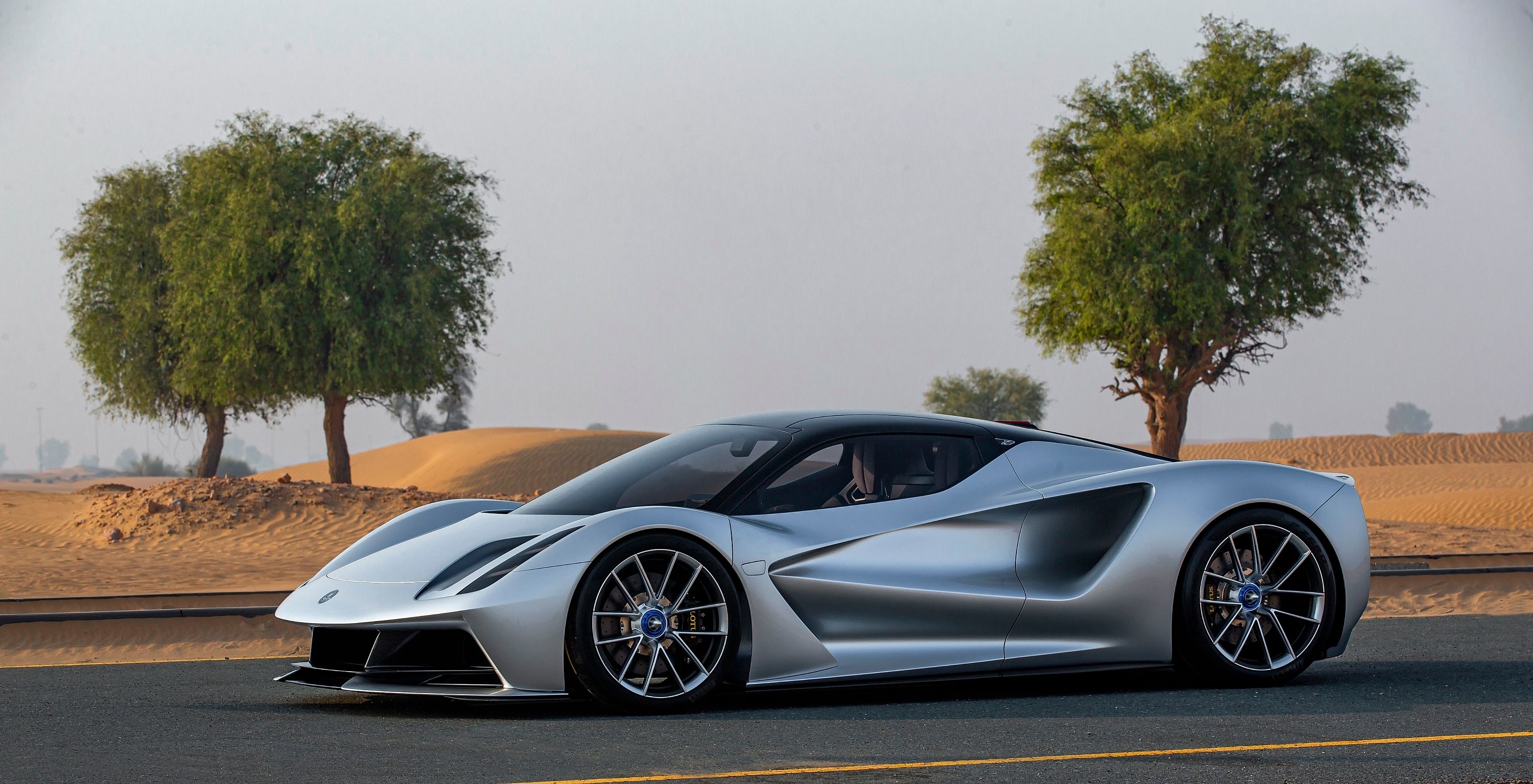
Just last month, Lotus published the first video showing its new Evija hypercar undergoing high-speed testing. The video shows a camouflaged test car (pictured below) driving around a test track with some funky music playing in the background. Since the Evija is all-electric, there isn't much to hear anyway. The video was shown during the Guangzhou Auto Show, showing that the British automaker is clearly focused on the Chinese market with this car. Only 130 examples of the Evija will be built, each priced at $2.2 million.
With two electric motors generating 1,973 horsepower and 1,253 lb-ft of torque, there's no doubt the Evija will be fast. But will it stay true to the Lotus formula of 'simplify and add lightness?' Lotus just published the first dynamic test notes for the Evija engineering prototype #2, giving us our first indication of how it drives. In the pre-test notes, Lotus says it conducted several computer simulations, plus multiple track sessions in the UK and Italy. Engineering prototype #2 features customer-spec suspension, EV powertrain, brakes, and carbon-fiber body panel and most complete interior yet.
Gavan Kershaw, Director of Attributes and Product Integrity at Lotus Cars published his initial drive notes following a test of the Evija. "The car is in a completely pure state at the moment, with no stability control or torque-vectoring. This is so we can evaluate the fundamentals of the chassis, to create the mechanical advantage before the other layers, such as the electronics, are added. It means we can really read the car. Later we can tune what we've gained as a mechanical advantage as we add layers. It's the Lotus way - get the fundamentals right from the start and use baseline aerodynamics, suspension kinematics, and geometry to feel the vehicle's response."
"Through testing like this, we can work on every element, like how connected you feel to the car, the driving position, location of the primary controls and visibility. It's all about validating how the thousands of hours of computer simulations actually translate into the vehicle. It's a two-fold process: proving they were the correct targets in the first place, and that the results are accurately translating into the car," he added.
"I feel really at home in it, it's really driveable. We assessed the stability and agility through tight corners. We did brisk accelerations to work out the torque split and looked at tire grip and response," Kershaw added. "Lotus has always been about 'input = output,' so if you do something you get a response, and that's what we're balancing now. It's all about the detail so, for example, we're validating the progressive response from the pedals. We know there's an enormous amount of torque but drivers will only want it when they ask for it with their right foot. It's about getting that throttle balance right. We assessed steering-wheel angle versus vehicle response at different speeds to ensure the car feels nimble at 30 mph as well as 200 mph."
Coming from a Lotus employee, we obviously have to take these words with a grain of salt. But based on how the company is testing the Evija, it should not disappoint when it reaches the customer's hands. "It's another chapter in my 30-plus years at this company," Kershaw said. "Yes, I've got a big smile on my face because it's the latest tech, it's a Lotus and we're at the forefront again."
